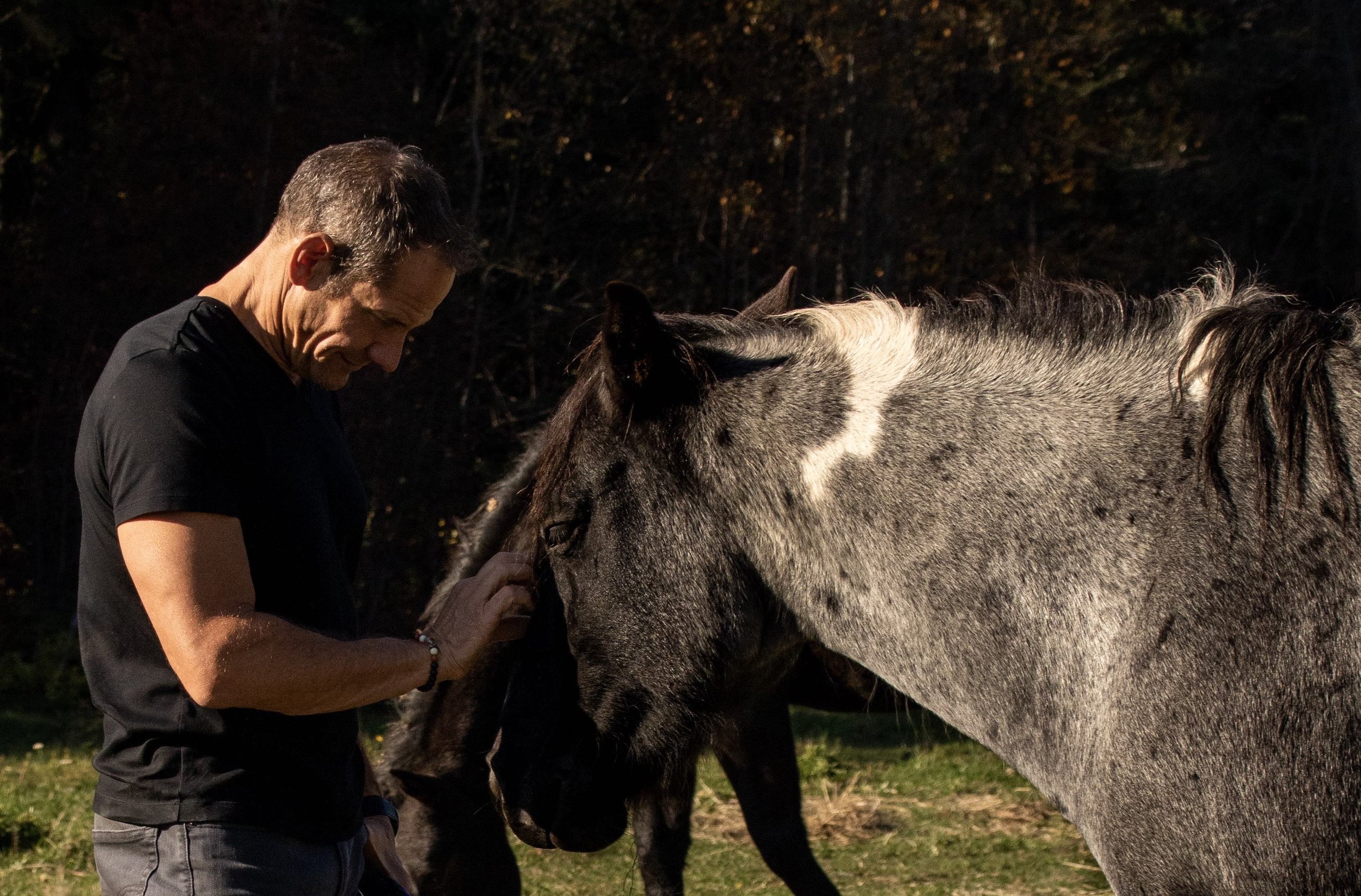Setting and respecting boundaries
Setting and respecting boundaries at work and in life
Horses have taught me a lot about boundaries. As prey animals, horses must always be prepared to instantly flee from predators like cougars and wolves.
So, when approaching a horse, you must move slowly and pay attention to its body language.
A single step – for instance, moving from four feet to three feet way – can put a calm, grazing horse on high alert.
Suddenly, the horse’s ears are pinned back, its body posture tenses. The horse is communicating, non-verbally: back off. One step back, and it returns to a relaxed posture and continues eating.
Before I met Hillary Schneider of Epona Rise Retreat, I didn’t have a clue about equine body language. She offers equine-assisted learning at her ranch near Kamloops, where she has been teaching me how the wisdom of horses living in a herd can help me help leaders.
Stop here, watch the horse’s body language, take another step. Before that, I didn’t see the horse’s boundaries because I was focused on my agenda — getting close enough to pet that beautiful creature.
When I realized this, I started thinking about where I was doing this in my relationships, both personal and work. It’s easy not to recognize other’s boundaries because they can be as subtle as a facial gesture or a change in voice tone.
If you are not paying attention, it’s easy to cross boundaries unintentionally.
Boundaries at work
Boundaries are important for horses and humans.
As we return to the workplace post-pandemic, it’s an excellent time to set healthy boundaries at work and respect other’s limits.
Many think of boundaries as being negative, unfriendly or confrontational. But, in reality, the act of clearly and confidently setting boundaries at work is an investment in mutual respect, productivity, well-being and happiness.
You should have boundaries with your manager, clients, your team, peers, and in your personal life.
Whether at work or in my personal life, if I am willing to set a boundary with you, it means I respect you or love you enough to say this is how we are going to be optimized together. Here are my boundaries. What are yours?
It’s up to us to communicate our boundaries and enforce them if necessary. If you don’t, how can you expect others to honour them?
For example, what if your manager is constantly emailing late into the evening, and you feel obligated to reply? This situation could lead to anger, guilt and resentment if you don’t speak up and set limits.
You could take two approaches here. First, you can ask your manager to delay sending after-hours emails because you feel pressure to respond immediately. Or you can set your boundary by not monitoring email after business hours and only responding at the start of the workday. Be prepared to have a conversation with your manager if they want to discuss it further.
If you’ve just been promoted to a new role, there’s the tendency to ignore your boundaries early on to prove that you are the right fit for the position. But remember that it’s easier to set and enforce your limitations in a new environment starting on day one.
Paying attention
Boundaries can change. I’ve learned with horses that one day they may be comfortable with me coming right up to them, and other days they don’t want you closer than 20 feet away. With humans, it can be the same thing, so we need to pay attention.
If you are observant, you can see it in the subtle ways someone responds to a text, email, or in-person interaction, for instance. If there’s resistance signalled, be sure to respect this boundary setting.
Try to slow down and be present in the moment. If you are multi-tasking, you are not fully present or engaged in your relationships and interactions, which means you could be missing subtle signs of boundary settings. Once you start paying attention to body language you will be amazed at how much information we communicate without words.

